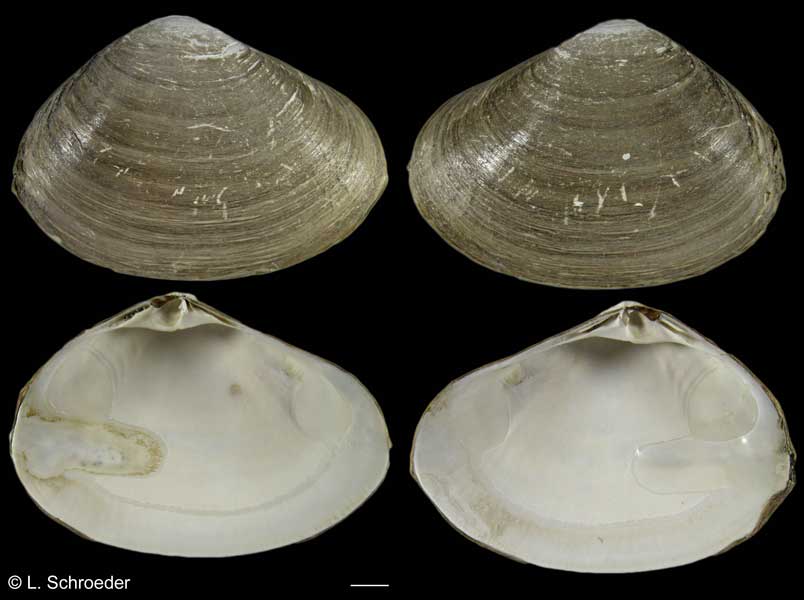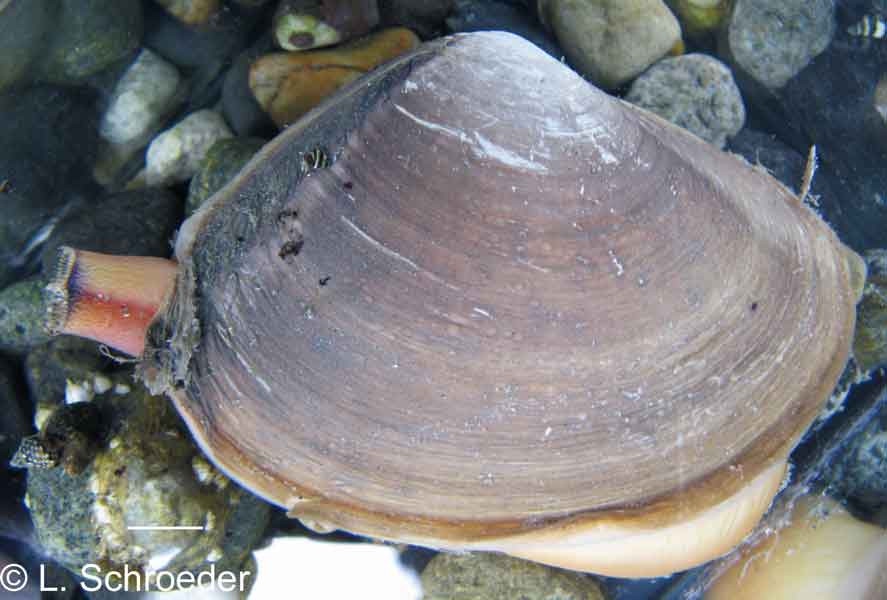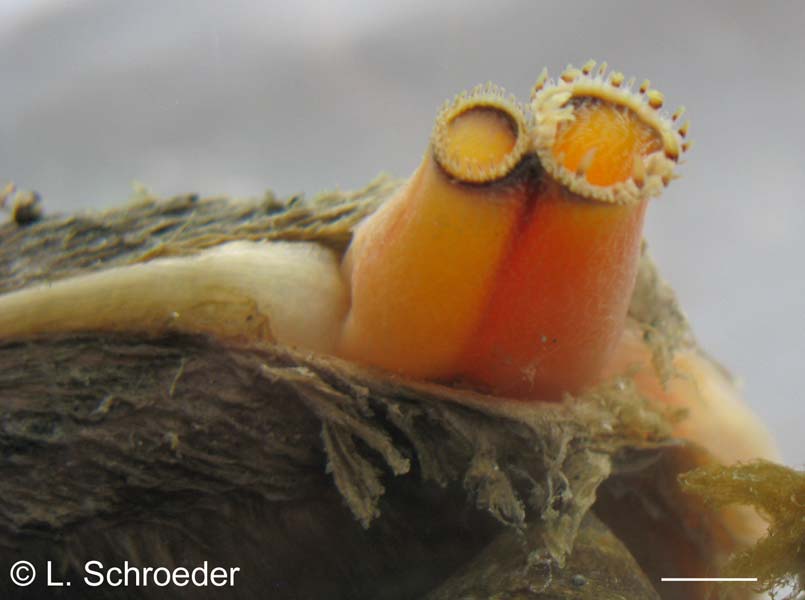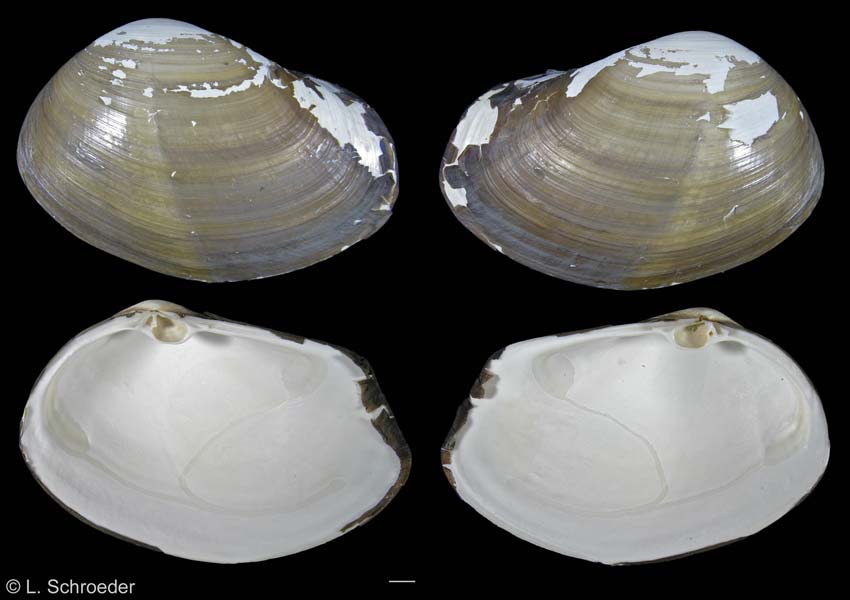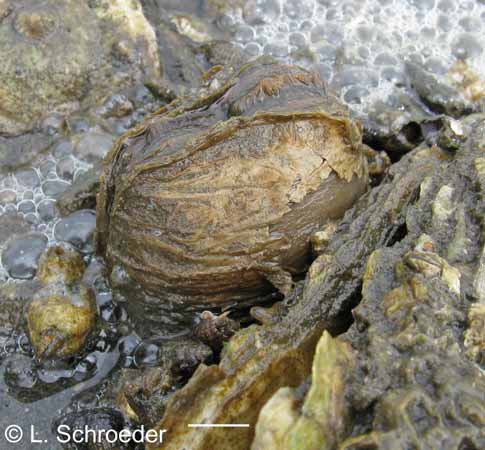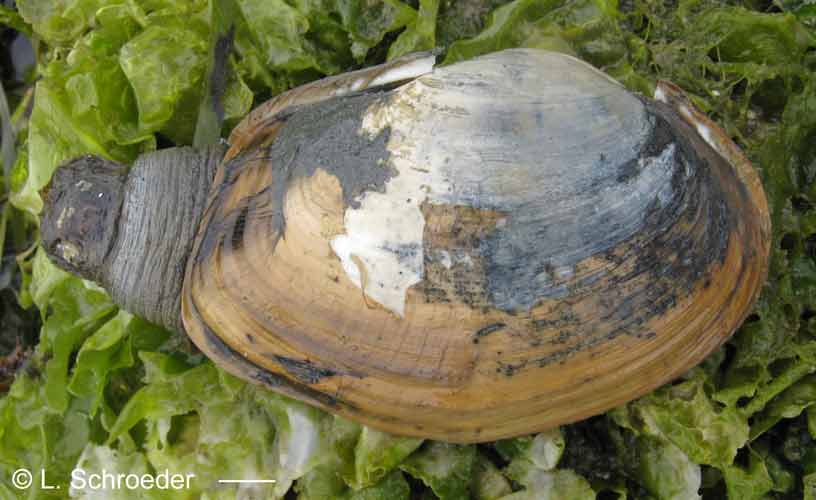Click on photo to enlarge. Scale line in photo equals 1cm unless otherwise specified.
* Species which are commonly encountered on the beach.
Bivalves
Family Mactridae
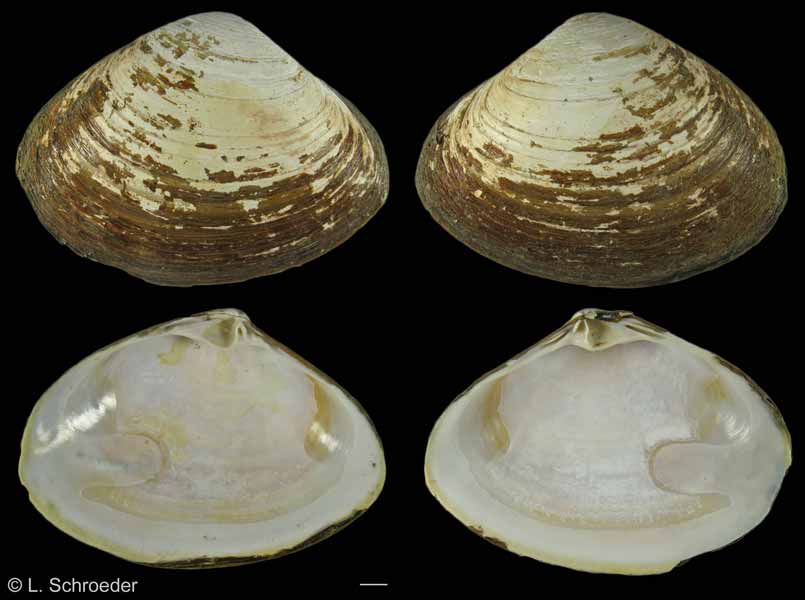 Birch Bay, WA
Birch Bay, WA
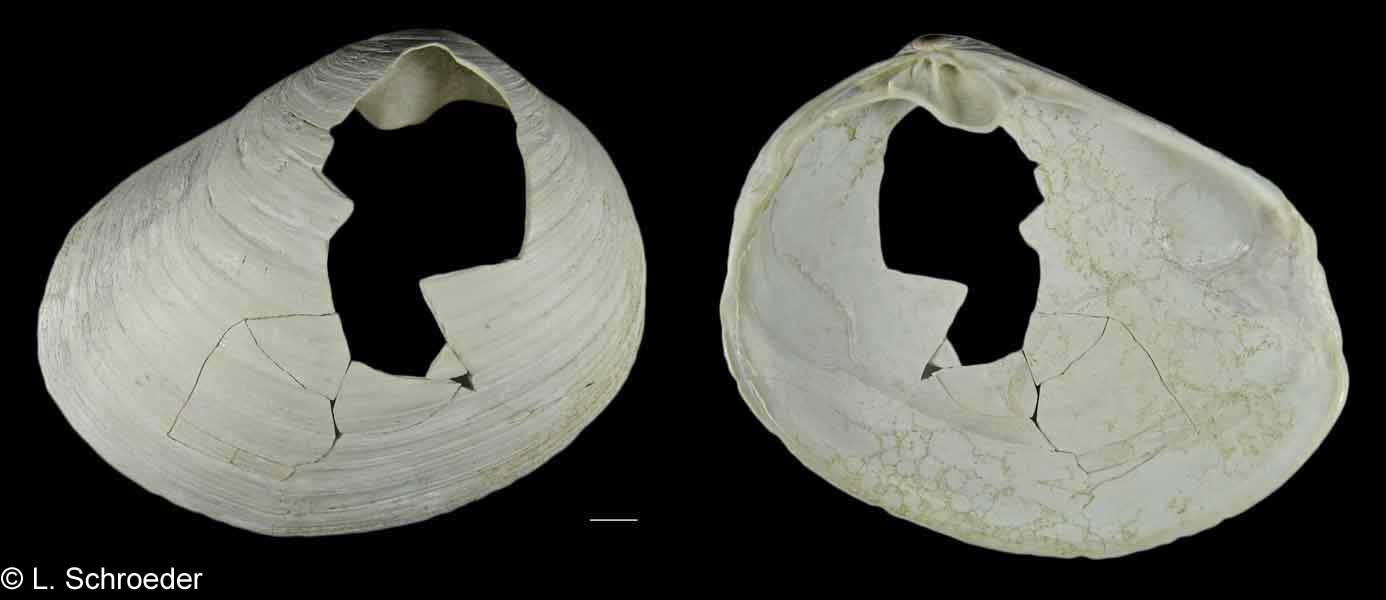
washed up on
Washington coast
Mactromeris polynyma (Stimpson, 1860)
Arctic Surfclam *
intertidal to 110m size to 15.5cm
northern Washington to northern Alaska; circumboreal - south to Japan & Massachusetts
This is occasionally found intertidally in its southern range and commonly found to the north. It prefers a muddy location. The periostracum is dark, shiny, and rough, and tends to be worn away near the hinged end of the shell.
(previous name - Spisula polynyma)
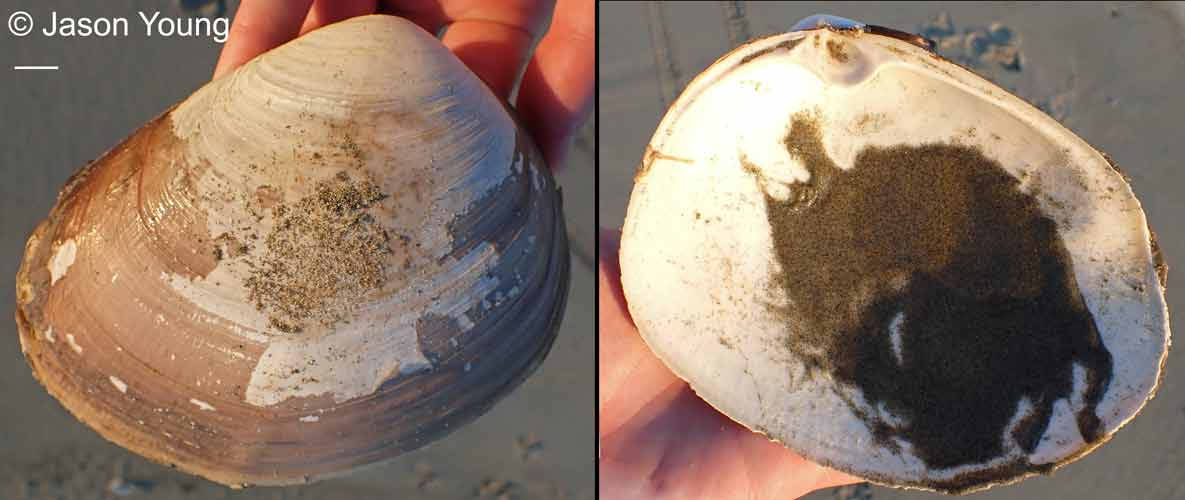 Tofino, BC, washed up on beach
Tofino, BC, washed up on beach
Tresus allomyax Coan & Valentich Scott, 2000
Strange Gaper
subtidal
size of largest known - 149mm
California to at least Haida Gwaii
This
is
very rarely seen and, as yet, live individuals have not been found in
local waters. It is only known to exist off the open coast and
seems to only be subtidal. It would most closely resemble T. capax.
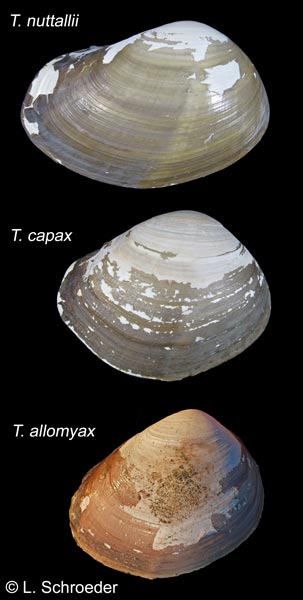 Tresus comparison
Tresus comparison
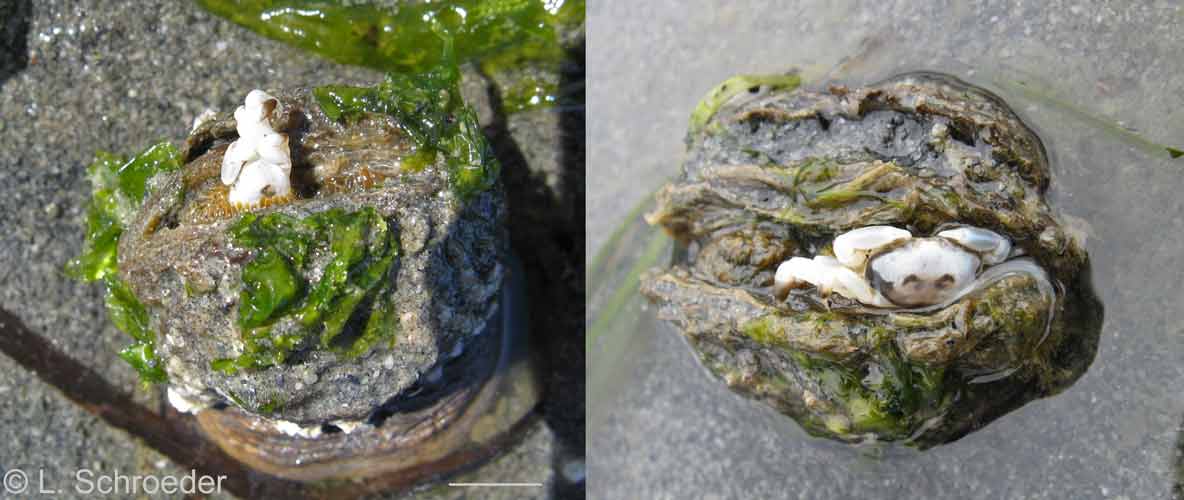 Birch Bay, WA, intertidal
Birch Bay, WA, intertidal
Pea crabs observed in the siphons of two different Tresus capax on the same day.
Tresus capax (Gould, 1850)
Fat Horse Clam or Fat Gaper *
intertidal to 30m size to 28cm
southern California to Aleutian Islands, AK
This
shell is very common and one frequently sees its exposed siphons at low
tide. It is sometimes mistaken for a geoduck. The clam may be buried
as much as 20 inches below the surface of the sand. The shell is somewhat oval
in shape. Commensal pea crabs are often found inside its shell.
(previous name - Schizothaerus capax)
The
siphons of the horseclams can be distinguished from that of the geoduck
in that the horseclam siphons have finger-like projections on the
interior rim of the siphon holes. The exterior tips of the
siphons also have leathery plates. Geoduck siphons are smooth and
have no projections inside the siphon. When both groups protude
significantly from the sand at low tide, they can look very similar if
the siphon is pinched shut and the siphons are clean of attached algae.
This page last revised: 8-12-2021

